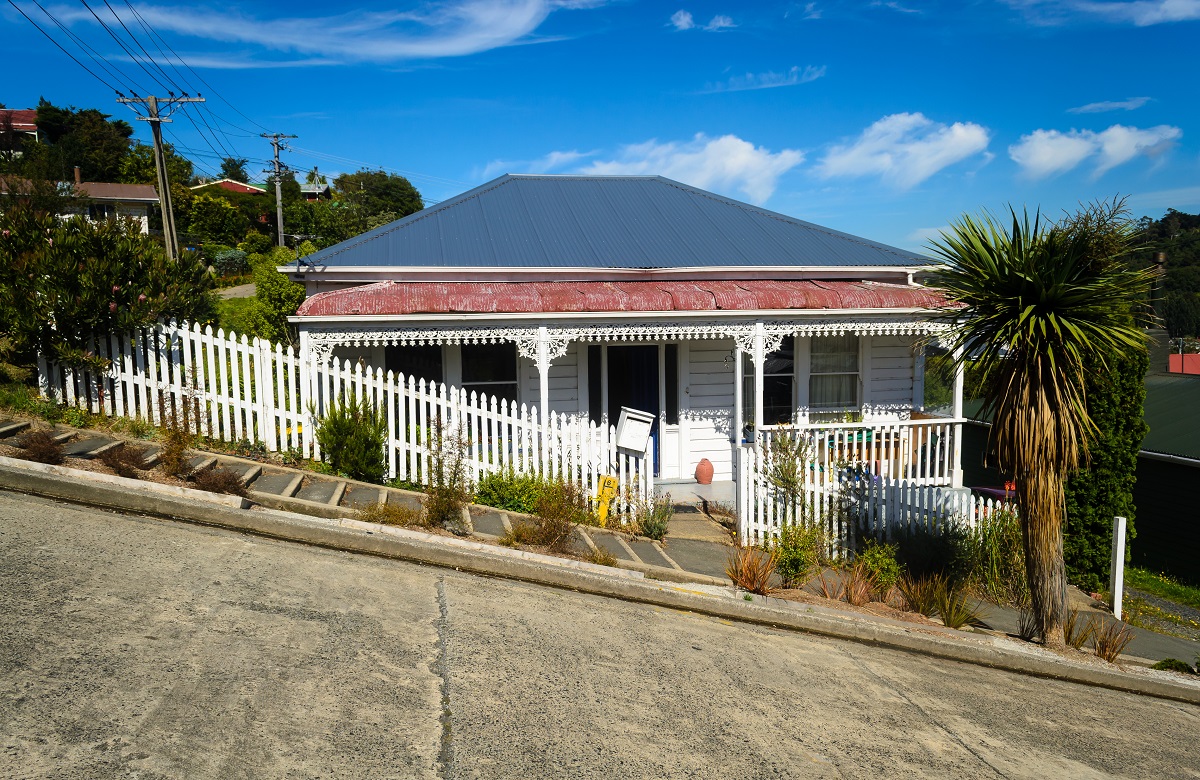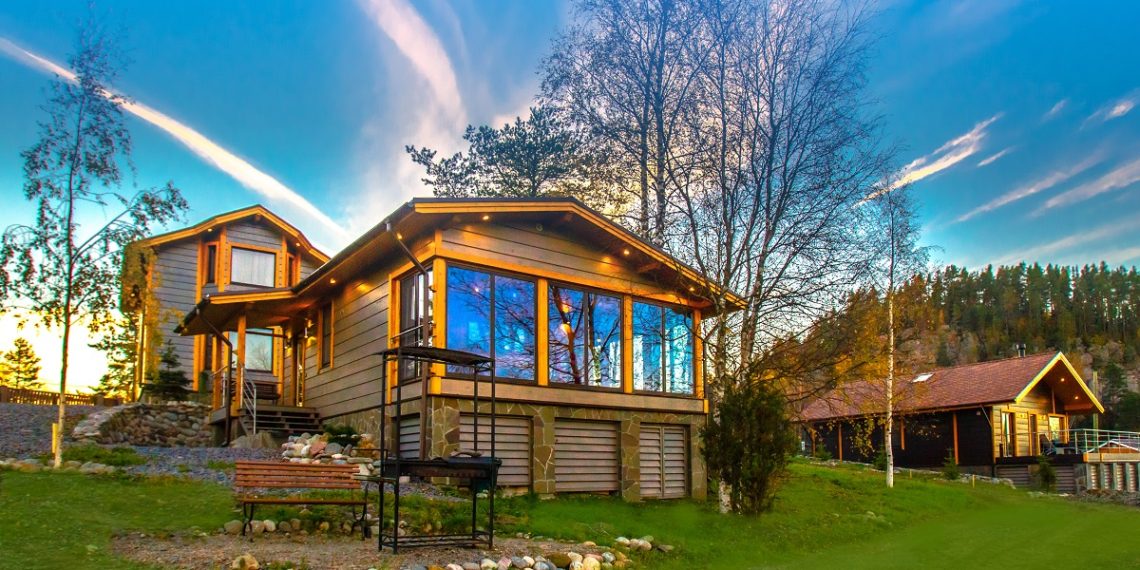If you’re planning to build your dream home soon, you probably have envisioned its location on a hilltop, away from the high foot and car traffic. With the elevated spot, you’re sure to wake up every morning with beautiful views and romantic city lights every night. There’s no doubt that choosing to create a house on sloped land comes with many benefits. However, like everything else, they also come with downsides.
Before you start investing in your home project, it’s crucial to weigh both sides of the fence to eliminate regrets in the years to come. After all, your dwelling place is your family’s haven, at least for a couple of years. It’s best to do your homework and evaluate whether the advantages outweigh the disadvantages. While upward sloping block designs for houses are pleasing to the eyes, they come with hassles.
Consider the following good and bad points of building your home in a sloped area lot:
Pro: Curb Appeal
Finally, you can have the home of your dreams. And if you want it on a hilltop, you can enjoy its beautiful aesthetics from afar. Elevated homes have the best curb appeal out of all types of properties, and this can be an advantage, especially if you’re planning to resell it in the future. A home’s curb appeal can warrant more prospective buyers than homes that look plain and dull.
It also won’t require any additional touches to uplift its look since the outdoor space will be naturally beautiful. Probably with the right outdoor lighting fixtures, landscape, and some furniture, your curb appeal will be at its peak.
Pro: Beautiful Views
You should consider the different views available from different angles when deciding where to build your home. If you’re the type of person who cherishes beautiful views more than anything else, having a house on a sloped lot is perfect for your preferences. You can wake up to beautiful scenes each and every time. Whichever area in your home, you can simply open the windows and look out and far for some stunning views.
You can even decide to add a patio, balcony, or viewing deck to make the viewing experience even more enjoyable for your family and guests. You can add extra lights to your house so you can enjoy night viewing too. When you’re blessed with a natural fresh view every day, you can feel refreshed and less stressed. Consider building a wrap-around porch if you want to capture the views at a 360° angle.
Pro: Privacy
Building your home in a sloped area means it’s best to add more windows not only for maximized ventilation but also for more chances of viewing the outdoors. Despite having many windows, though, you can be certain that your family can enjoy a high level of privacy. Since the back of your property slopes, your home won’t be directly facing your neighbour. The abundance of the surrounding plants and greeneries means that building on a mountain lot also provides greater privacy.
A mountain home is ideal if you like living in a secluded area. If you’ve gotten tired of hearing loud noises from car horns and neighbours shouting inaudible words, it’s best to build a home far away from the urban centre and downtown. Typically, there will be a few houses within a few hundred meters of your home due to the elevated landscape. This is why hilly residential areas appeal to people who prefer privacy.
Pro: Natural Light
Another advantage of having a home on a hilly lot is the abundance of natural light. This can allow you to save costs on electricity bills as you can practically use natural sunlight during the daytime. Take advantage of the illumination that the sun provides in every corner of your home that comes with windows. You can either open the windows entirely to invite fresh air and sunlight or open just the curtains, so enough sunlight can seep through to the rooms.
Pro: Energy Efficiency And Ventilation
A home built on sloped land can benefit from natural ventilation. Needless to say, hilltops offer a fresher quality of air compared to the lower landscapes of cities. In addition to providing fresh air, natural ventilation can reduce the demand for artificial cooling in your home, thus lowering your energy bills. Houses built on hillsides are more energy-efficient than homes built on flat land surrounded by other buildings. This is because there are no high buildings that block sunlight and airways.
Pro: Walkout Basement
With a sloped lot, it’s possible to build a home with a walkout basement. In a walkout basement, part is underground and part is above ground. Contrary to a normal-ground-level home, this basement style offers more convenience.
With lots of windows, outside access, and light, this type of basement feels more like an extended part of your home. You can design it in different ways to make it feel more comfortable and cosier. You can use creative interior designs to maximize the use and feel of your walkout basement.
Pro: Expanded Space
A sloped lot forces the construction of additional levels, maximizing space rather than extending horizontally. For this reason, your home won’t feel too tight or narrow because the available vertical space is more than enough. Having additional floors can add character to a house and allow space distribution to be more varied.
Pro: Lesser Excavations
On average, an excavation is less required when building a home on a slope, especially if the hill has a gentle grade of less than 10%. The key is to find a hilltop lot that has a natural viewing landscape, so there won’t be more excavations needed. You can also reach out to a professional elevated home designer to make the most of your land space.

Con: Unease Of Prepping The Construction Site
Getting all the construction equipment and materials onto the site is more challenging when the slope is steep. Consider what kind of construction vehicles will be required and how they can best access the site. Also, note the fuel needed due to trips and efforts to travel on sloped land.
As you wait for your home to be built, your new home site will take a beating from trucks coming and going, heavy equipment parking, and construction materials being thrown around. You’ll be required to even out the land once the home is already finished.
Con: Drainage Issues
A home’s foundation should never be flooded or puddled with water. This is usually a challenge among homeowners of houses on hills. However, you can prepare your drainage flows more effectively with a proper drainage system and a professional architect and engineer.
Con: Higher Construction Cost
Depending on how uneven your land is, you may need to purchase more materials than usual to level the land. Construction costs increase when a house is built on sloped land, one of the most significant disadvantages. You’ll have to use more materials to even out too-steep surfaces. Therefore, choose your home building site very carefully if it’s sloped. This is a make-or-break moment, especially when you don’t want to spend too much on construction materials for the walkway and ground surfaces.
Con: Possibilities Of Landslides
In sloped land, landslides are a significant concern when building a house. Landslides can be triggered by heavy rains and strong winds and earthquakes and strong winds. This can be dangerous for your family and your other assets like vehicles.
Plant trees with deep roots if you live in a hilly area so that the soil remains intact. Soil erosion can be reduced as a result of this practice. You’ll also need to create contingency plans if landslides and other disasters occur in your neighbourhood.
Con: Requires More Maintenance
A home will always require maintenance and care, and the same thing goes for your home in a sloped lot. Simple maintenance chores will require more effort because of the elevated ground. Making maintenance easier by choosing the proper landscaping for your home and your lot can help. Utilize technology and effective systems to maintain your home easier and speedier.
Con: Prone To Erosion
Water drains differently on a sloped lot than on a flat lot, so erosion is more likely. This could become a significant issue if not dealt with before construction begins. The key is to prepare the soil and ground surfaces early on.
Builders may overlook the soil type on a sloped property, but it can be problematic. It’s best to hire a landscape artist who can suggest and recommend the best kind of soil to use on your landscape. Some ground soil might not be sufficient to protect your home from erosion. Wet or frozen clays may cause foundations to expand or swell, necessitating expensive engineering fixes or additional filling of granular soil.
Con: Can Be Difficult To Access
Another obvious downside of a home located on a hill is its inaccessibility. This could be hard for the owner and the contractors to frequently drive to and fro. The lack of transportation nearby can make it hard for your family and household members to live. While you own a car, it’s essential to find alternatives for transportation in case of emergencies and disasters. This is one definite downside of a home placed on a sloped hill.
Conclusion
As you consider which lots could be suitable for your home, keep these pros and cons in mind. When you know the advantages and disadvantages of having a dream home built on a hilltop, you can better decide if it’s worth the efforts and risks. Remember to do your research and preparations well, so you won’t have to regret anything later on.


